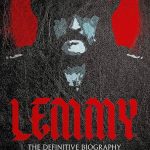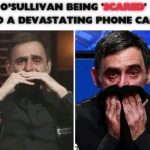Sons of Heaven: Ozzy and Lemmy Throwback Picture in Early Years
A raw glimpse into rock history. Long before the legends were carved in stone, these two icons shared wild nights, heavy riffs, and backstage chaos that shaped the spirit of metal forever.
The photograph is black and white, grainy, and half-torn at the edges — like a relic that shouldn’t have survived the hurricane of debauchery that swirled around its subjects. Ozzy leans into Lemmy’s shoulder, his eyes gleaming with that feral mischief that would one day terrify suburban parents and thrill millions. Lemmy, cigarette hanging from his lips, fingers wrapped around a half-empty bottle of Jack, wears the faintest smirk, as if he knows exactly where the night is headed — and it’s nowhere good, but exactly right.
In this picture, they’re not yet the Prince of Darkness and the eternal Ace of Spades. They’re just two scruffy kids with battered leather jackets, secondhand boots, and the weight of the world nowhere on their shoulders. The backstage walls behind them are plastered with crude graffiti — declarations of love, band names scrawled over each other in a territorial pissing match. Somewhere near Lemmy’s elbow, you can just make out the word Immortal, as if the walls themselves knew these two would never really die.
That night was 1973, or maybe ’74 — no one remembers, not even Ozzy, who insists it was after Sabbath’s Paris gig, or Lemmy, who swears it was before a Hawkwind show where he nearly missed the stage call because he was too busy rolling a joint the size of a roadie’s forearm. Doesn’t matter. It was sometime in that twilight of the early seventies when the rules were still soft enough to break, and the music was all that really mattered.
They met at the back of a grimy club called The Crow’s Nest, where the beer was warm and the amps never worked right. Lemmy had just finished tearing through a set with Hawkwind — the bass line of Silver Machine still vibrating the beer-soaked floor. Ozzy was drifting around, half-lost, half-looking for trouble, and found both when he tripped over a cable and nearly crashed headfirst into Lemmy’s bass case. Instead of a fight, there was laughter — the easy kind that only comes when you know you’ve just found a kindred spirit in the wreckage of rock and roll.
“Got a light?” Ozzy asked, patting himself down as if there might be a match hidden in his shredded pockets. Lemmy handed him his last matchbook and they sparked up by the club’s back door, trading stories about shady managers, insane drummers, and dodgy promoters who paid them in beer and cheap speed instead of cash.
It didn’t take long for them to hatch a plan for an afterparty. There was always an afterparty. Someone knew someone who had a flat in Camden with an endless supply of whiskey, questionable pills, and a battered turntable that never played the same record at the same speed twice. They poured in with half the club in tow, a ragtag parade of groupies, roadies, and the usual suspects who never missed a chance to orbit around a bit of stardust.
By dawn, the record player was dead, the whiskey was gone, and Ozzy was scribbling lyrics on a pizza box while Lemmy tried to teach him how to roll a perfect cigarette. Between bursts of laughter, the two made a pact — no matter how big they got, no matter how many arenas or gold records or hotel bans, they’d always remember nights like this. Nights where the music was raw, the friends were real, and the world was wide open.
Of course, the years weren’t always kind. There were fallings-out and reconciliations, tours that clashed, managers who meddled, substances that took more than they gave back. But that throwback picture — that’s proof that underneath the tattoos, the excess, the tabloid madness — there was a bond forged in the sweaty backrooms of a thousand clubs just like The Crow’s Nest.
They’d meet again and again across the decades, always picking up right where they left off. Lemmy would call Ozzy “Madman” and Ozzy would call Lemmy “The Last True Rocker.” They’d sit in dressing rooms, trading stories that never made it to the magazines — about fans they loved, riffs they stole, shows they barely survived. They’d toast the ones who didn’t make it, and promise they’d see each other on the other side.
There’s a story — maybe true, maybe not — that in the late 90s, Ozzy wandered into the Rainbow Bar & Grill in LA looking for Lemmy. It was well past midnight, but Lemmy, of course, was there, planted at his throne by the slot machine with a whiskey and Coke. Ozzy sat down, tried to convince him to come on tour again. Lemmy just grinned and said, “Madman, the only tour I’m on is this bar. And I’m not leaving ‘til I win this damn machine.” Ozzy stayed all night, dropping coins into the slot, both of them laughing so hard the bartender told them to keep it down — as if you could ever quiet the Sons of Heaven.
The throwback picture still surfaces now and then — someone finds it in a shoebox, posts it online, and it makes the rounds. Kids in leather jackets repost it, eyes wide, dreaming of their own wild nights and immortal riffs. They see two young punks who hadn’t yet been crowned, who didn’t care about fame or fortune, who just wanted to play it loud enough to drown out the world for a few precious hours.
And maybe that’s the real magic. Long after the amps are switched off, the records gather dust, and the headlines fade, there’s that one image. Ozzy leaning in, Lemmy smirking at the chaos to come — two sons of heaven in leather and denim, promising each other they’d never bow, never break, never stop until the world had heard every last note they had to give.
So if you ever find yourself in some back alley club, the speakers rattling the floor, the air thick with smoke and dreams, raise a glass to Ozzy and Lemmy. To the wild nights. To the heavy riffs. To the backstage chaos that made legends out of mortals. To the sons of heaven who never asked permission — and never said goodbye.









